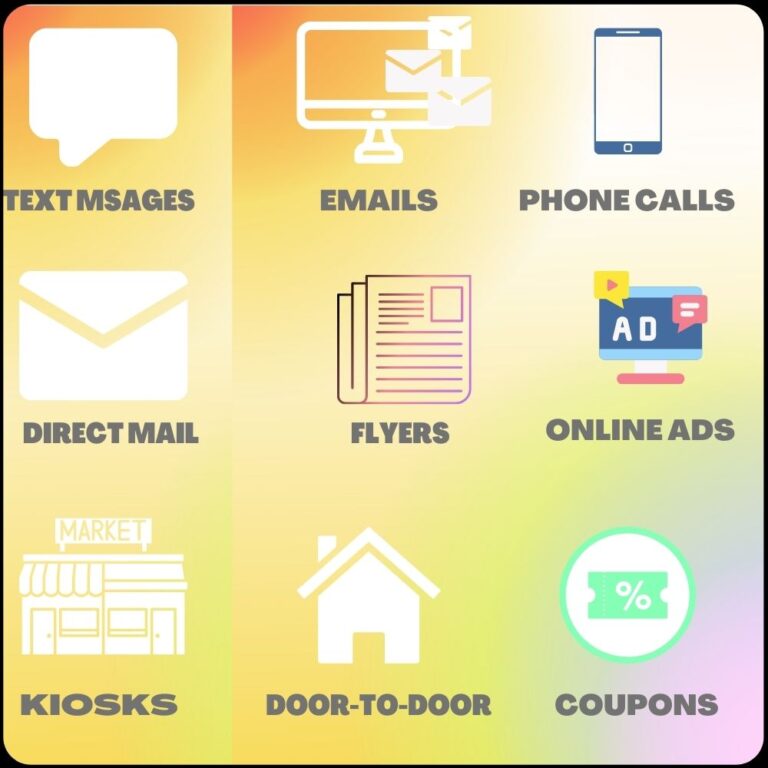Table of Contents
ToggleDIRECT MARKETING
What is Direct marketing?
Direct marketing is a popular and effective tool to establish a direct connection with the audience. Any marketing technique that depends on direct communication or distribution to the customer, rather than a third party is called direct marketing. This process generally cuts off the middlemen or media that’s why it is known as direct marketing. It is also known as direct response marketing.
How does Direct Marketing work?
Direct marketing campaigns work independently. In Direct Marketing, there is direct communication with a target audience. It doesn’t follow traditional public campaigns and doesn’t use media publications or mass media. In direct Marketing, companies deliver their messages or do sales pitches with the help of social media, Email, Phone/SMS, etc.

Advantages of Direct Marketing.
Direct Marketing has pros and cons. Consider this carefully before starting a campaign.
1. Targeting
You can send specific messages to a particular group of customers based on their buying behaviour. The more you will be successful if you will be more targeted.
2. Personalization
Reach Your audience with a personal touch. Personal touch includes details like past orders, direct mail, and a phone call that can engage a customer can build a relationship with your business.
3. Affordable
Most Direct Marketing will be more cost-effective than mass media advertisement campaigns. Tactics like email marketing or leafleting can be very affordable.
4. Measurable
You can easily track the success of the marketing messages that are sent to a recipient that takes a particular action or use a code that can help you plan future campaigns.
5. Informative
Detailed information on your products and services can be given to the consumers which will be more informative.
Disadvantages Of Direct Marketing
Some of the hurdles which you want to avoid when using direct marketing methods.
1. Interrupting
Many people find direct marketing annoying and interruptive. This is true, especially in the case of the door-to-door salesman. Some people don’t like marketing emails and consider them ‘junk mail. It can create a negative brand association and people will not like to buy if the tactics are annoying.
2. Environment
Using leaflets or paper can be harmful to the environment. This can create a negative impact on your brand image. You can use recycled or try email campaigns.
3. Low Response Rates
Direct Marketing response rate is 1-3%. When you reach a consumer who is not interested in your product are likely to find it irritating. Try sending mass messages to minimize this low response rate.
4. Competition
When a Recipient receives a greater number of marketing emails, it can be hard to make your messages stand out.
5. Cost
Telemarketing and mail can have high financial and resource costs.
6. Legal Issues
The laws of Privacy and Data Protection in direct marketing limit you to ensure that you mail only the consented people that have agreed to receive marketing messages from you.
Let’s see what can be sold with direct marketing?
From computers to books almost everything can be appealing to the Consumer. Yes, after that we can reach the consumer efficiently. The profit margin must be sufficient to cover the cost of accessing.
Direct Marketing Channels
There are seven channels of direct marketing
- Direct mail: Direct mail is when you send promotional emails directly to the target consumer.
- Telemarketing
- Leaflet Marketing
- Social Media Marketing
- SMS Marketing
- Direct selling
Direct mail
This is the most common form. Direct mail is when you send promotional mails through post by using the list of mailing addresses directly to the target consumer. Mail includes free trial CD” s, a trial sample delivered. Bulk mailing is popular for travel and tourism industries, electronic home entertainment products, etc. Bulk mail rates are much lower than normal individual mail.
This is the type of marketing which is gaining popularity as the use of the internet has increased in India. Spam is of significant concern as email service providers offer email filters to eliminate spam.
Telemarketing
This is the most famous form of telemarketing. In this method, a telephone is used to contact prospects.
Leaflet Marketing
This type of marketing is done by food outlets, supermarkets, and beauty salons to capture the neighborhood markets. This is a very inexpensive method as compared to direct mail.
Social media marketing
In this type of marketing social media platforms are used to connect with your target audience and market your product and drive website traffic.
SMS Marketing
SMS Marketing sends promotional messages for marketing purposes using text messages. It is a form of marketing that requires contacts. A marketer can post public content that people can choose to like and follow.
Direct selling
The type of goods the company market like jewelry, cookware, cosmetics, housewares, insurance, and much more to market products and services as independent contractors are direct selling.
Conclusion
Direct marketing gives us the chance to promote our products directly to the needed customers. In other words, the organization directly communicates with selected customers which are previously selected. There is no middle man between the organization and the customer. In direct marketing, we request direct action from customers.

